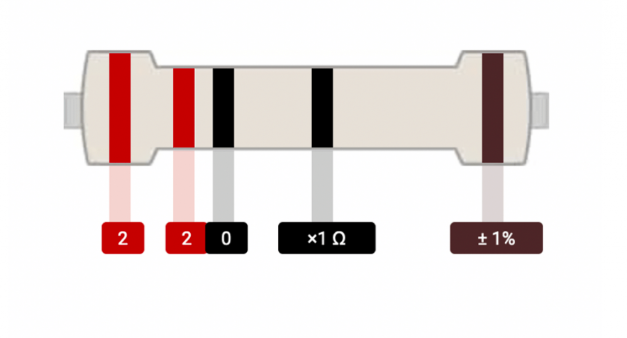220-Ohm Resistor
Description
A 220-ohm resistor is a passive component that opposes the flow of electrical current in a circuit with a resistance value of 220 ohms. It is commonly used to control current, divide voltages, and terminate transmission lines.
Characteristics
- Resistance Value: 220 ohms, which is the measure of its opposition to the flow of current.
- Tolerance: Typically ±5%, ±1%, or ±0.5%, indicating the possible variation in resistance value.
- Power Rating: Specified in watts, which is the maximum power the resistor can dissipate without overheating.
- Physical Size: Varies with power rating and current-carrying capacity.
- Color Coding: Resistors are often color-coded with bands that indicate their resistance value and tolerance.
Identification Methods
- Color Bands: A 220-ohm resistor typically has a red, red, brown, and gold color sequence (from left to right) on its body.
- Red: First band represents the first digit of the resistance value (2).
- Red: Second band represents the second digit of the resistance value (2).
- Brown: Third band represents the multiplier (10^1 or 100 ohms).
- Gold: Fourth band indicates the tolerance (±5%).
- Markings: Some resistors have numerical markings directly printed on them.

Common Applications
- Current Limiting: To limit the current flowing through a component or a branch of a circuit.
- Voltage Divider: In voltage divider circuits to create a specific output voltage.
- Biasing: In amplifiers and other analog circuits to set the operating point of transistors.
- Pull-Up/Pull-Down Resistors: To set the default state of a digital input.
- Termination Resistors: In transmission lines to minimize signal reflection.
Usage Tips
- Ensure the resistor's power rating is adequate for the current flowing through it to avoid overheating.
- Pay attention to the resistor's tolerance when precision is required in the circuit design.
- Use the correct resistor value to avoid altering the intended circuit operation.
- Consider the physical size and form factor of the resistor for proper fit and PCB layout.